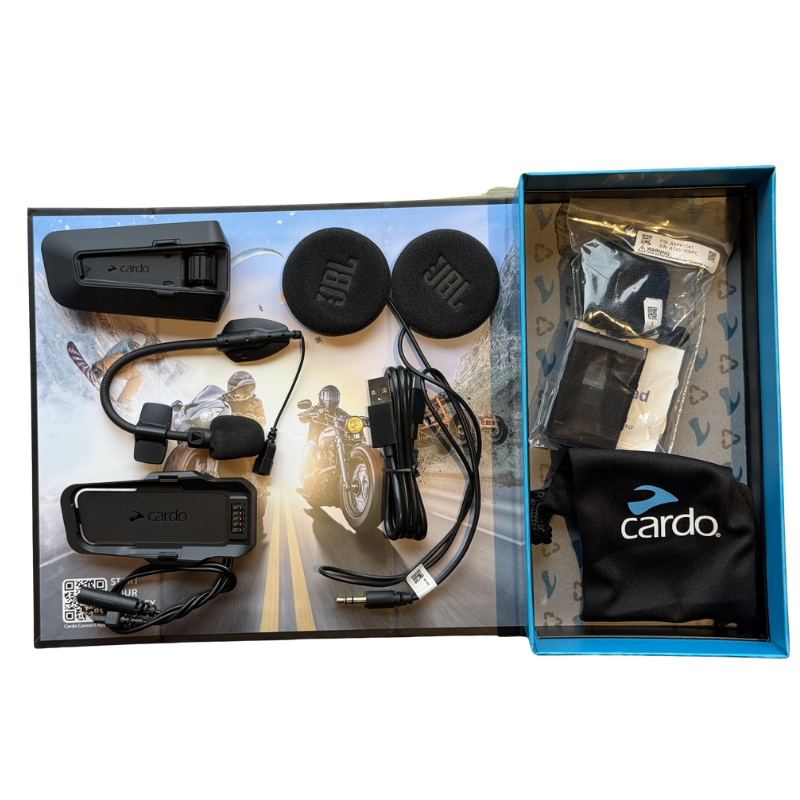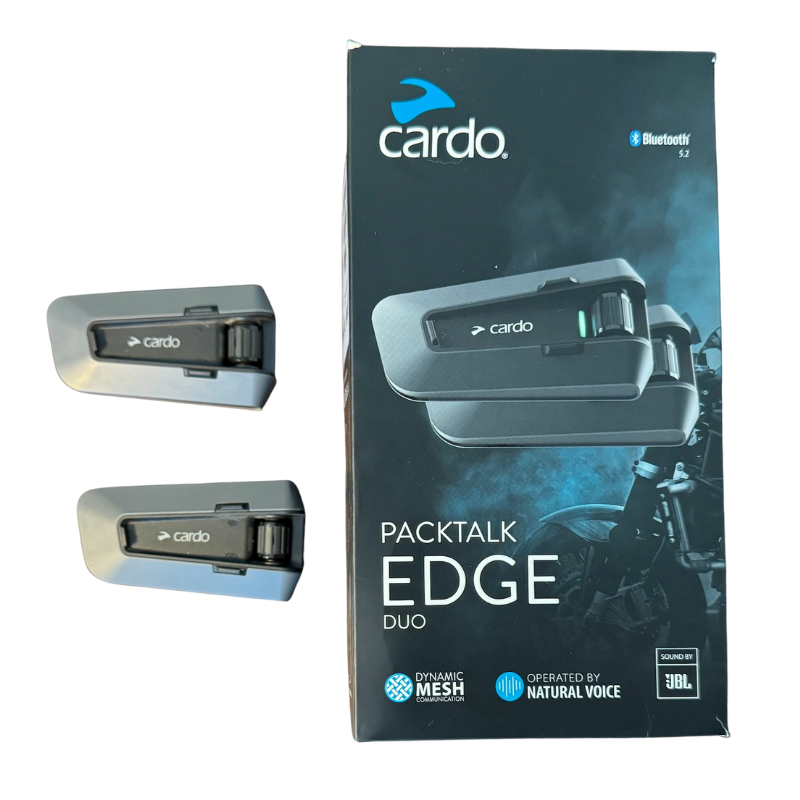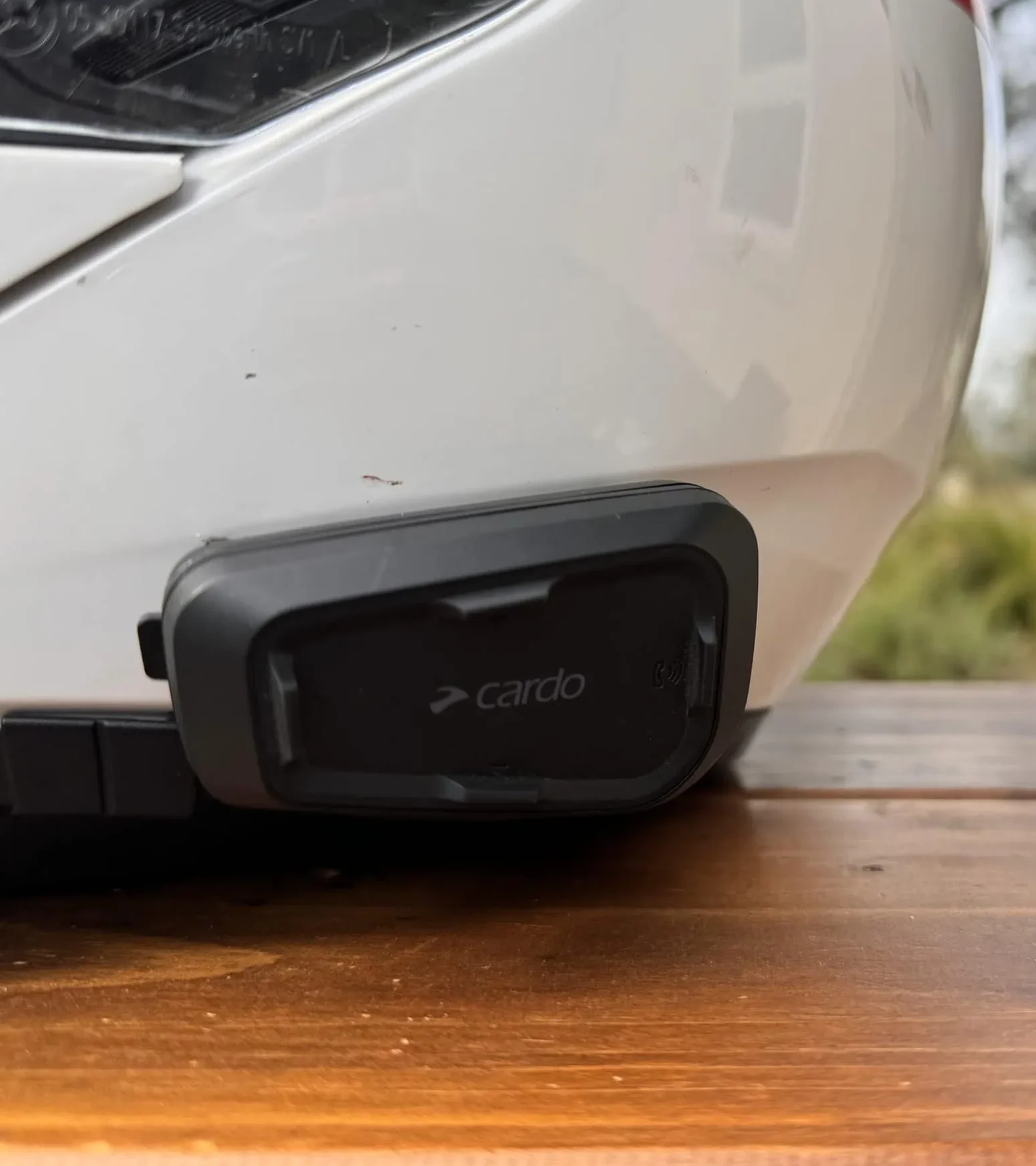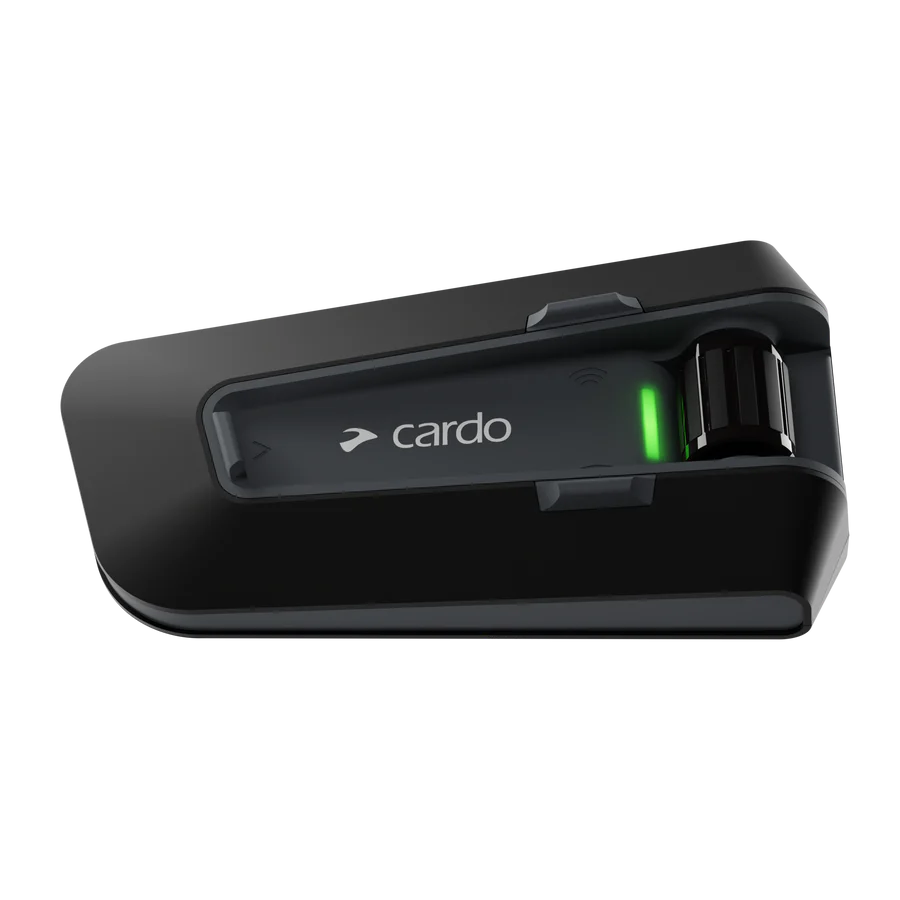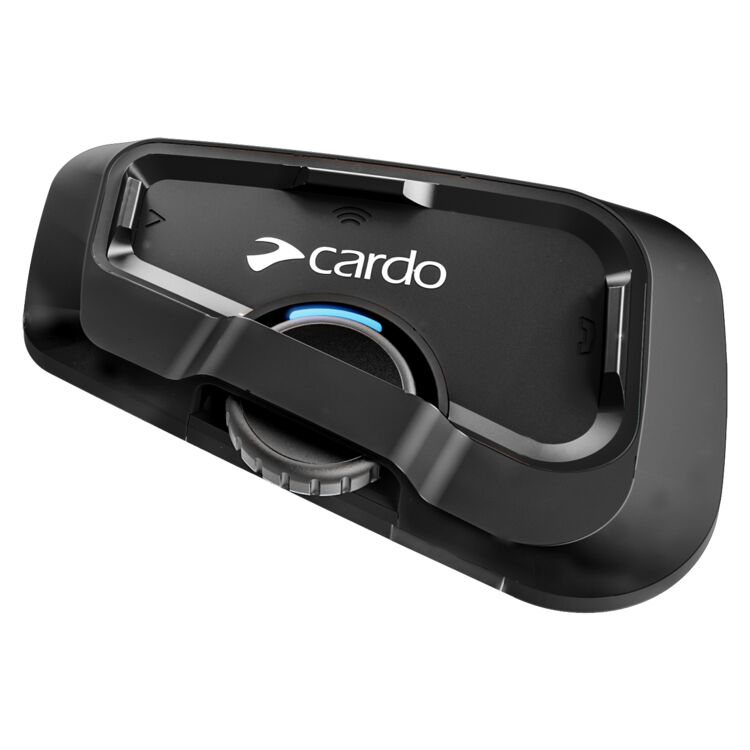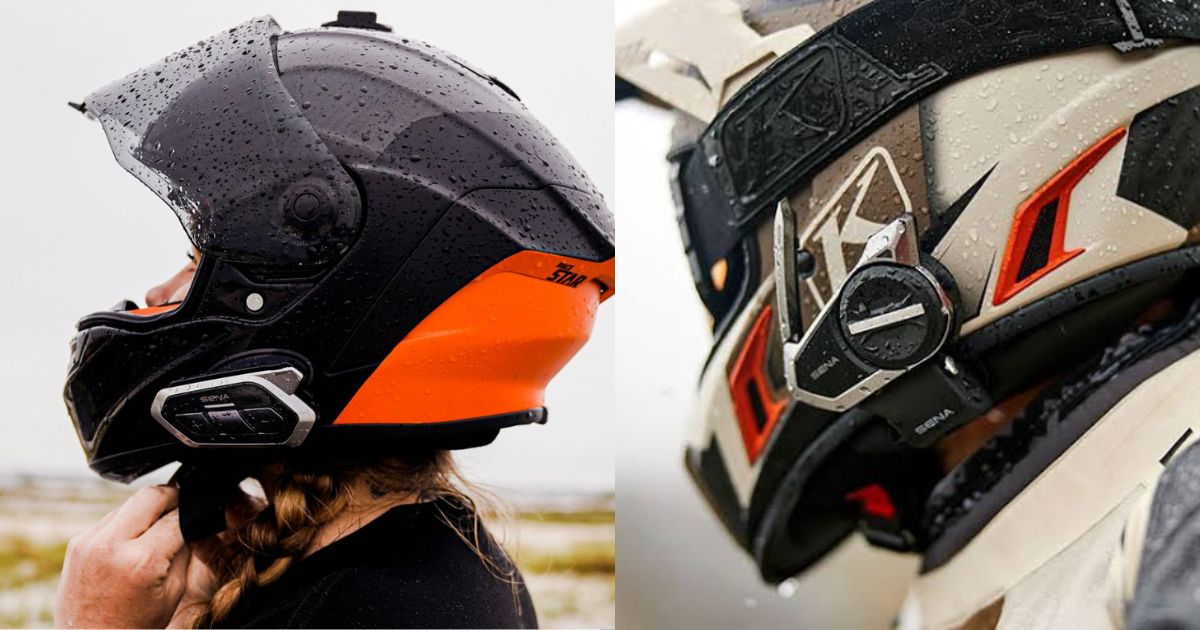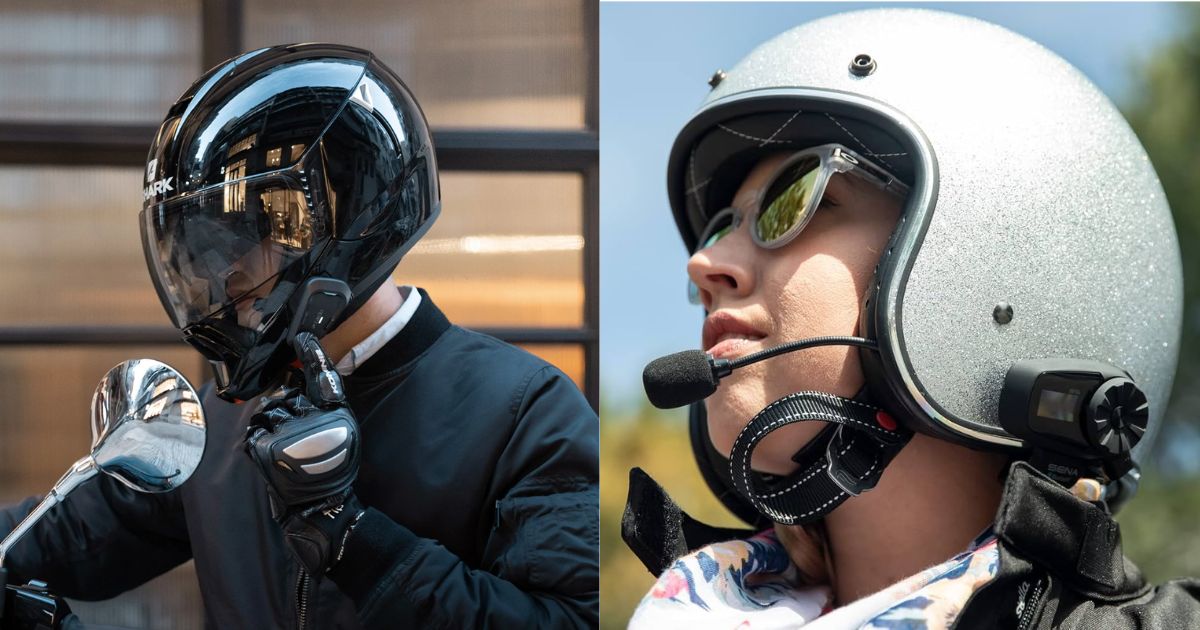
Best Cardo Communicators for Motorcycle Riders
left for contents
I’ve tried almost every Cardo communicator you can buy today — from the Packtalk Pro, Edge, and Custom to the Cardo Spirit HD — and after years of riding with them, I’ve learned which ones actually suit different kinds of riders. Between our full written reviews and on-bike videos, I’ve seen what separates each unit in daily use: audio clarity, battery life, waterproofing, and how they perform in real group rides.
And just to be transparent — I don’t just test these units once and move on. I own the Packtalk Pro, Edge, Custom, Spirit, and Spirit HD, plus all of Cardo’s speaker options. Using them across different helmets and rides has shown me the small things you only learn over time: comfort, audio differences, mesh behavior, and how everything holds up in bad weather. So this perspective comes from living with these units, not a quick demo.
Cardo is still the gold standard in motorcycle communication. Whether you’re a solo commuter, weekend tourer, or part of a full mesh pack, there’s a setup that fits your riding style. Here’s how each model stacks up — and which one I trust on my own helmet.
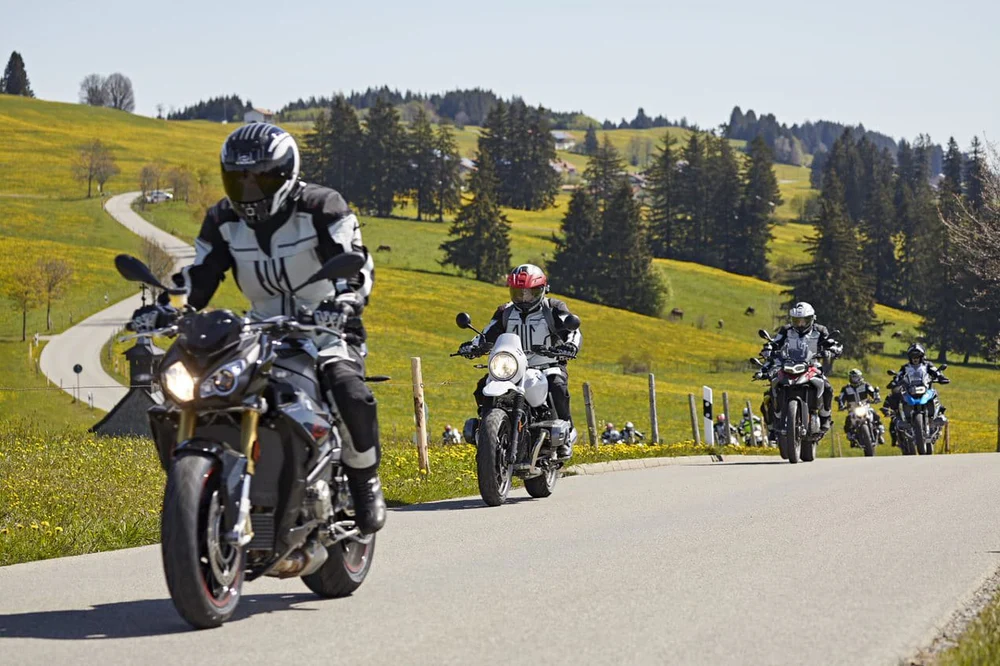
What makes Cardo comm systems so polarizing?
- Mesh doesn’t magically fix sloppy riding: the headline‑grabbing Dynamic Mesh Communication promises seamless group chats. It works incredibly well, but only if everyone rides within the 1.6 km range; stray too far and you will still drop out.
- Bigger speakers aren’t always better: 45 mm JBL drivers in the Packtalk Pro produce deep, powerful sound, but they may not fit in cheaper helmets without large speaker indents.
- Crash‑detection is clever but not fool‑proof: the Packtalk Pro’s IMU can trigger an emergency call when you crash. It’s a nice safety net, but you still need cellular service and a charged phone for the feature to work.
- Budget Cardos can sound better than mid‑range competitors: reviews of the Spirit HD highlight audio quality that rivals far pricier units. The catch is that it only pairs to one other rider and the sat‑nav announcements can be quiet.
Who needs what?
Before diving into the models, figure out the type of riding you do most. Cardo units fall into these categories:
| Riding scenario | Recommended Cardo | Why |
|---|---|---|
| Group tours or mixed‑brand rides | Packtalk Pro/Edge/Neo | Mesh intercom automatically reconnects riders and supports large groups. These models also pair with other brands via Bluetooth for cross‑brand compatibility. |
| Small group rides, couples or pillion chats | Freecom 4X/2X | Bluetooth intercom with excellent JBL sound at a lower price. Suitable for up to four riders (4X) or two riders (2X). |
| Solo commuting or occasional pillion | Spirit HD/Spirit | Affordable units with decent range and music streaming. Great sound and simple operation, but they lack mesh and group capacity. |
Here are our top three Cardo picks that deliver the best mix of performance, features, and value for different riders.
It adds crash detection and upgraded 45 mm JBL speakers for audiophile-level sound and extra safety on long solo or group rides. See my full review here. | The Edge balances performance, features, and price with mesh connectivity, JBL audio, and easy magnetic mounting—everything most riders need. See my full review here. | Delivers impressive HD sound, solid range, and dependable Bluetooth performance at a fraction of the cost of mesh units. See my full review here. |
|
|
|
|
|
|
It adds crash detection and upgraded 45 mm JBL speakers for audiophile-level sound and extra safety on long solo or group rides. See my full review here.
- 15+ rider intercom over Mesh (even Senas)
- Magnetic air mount
- Auto on-off
- Crash detection and emergency call
- 45mm JBL speakers in the box (the best)
- Costs as much as a mid-range helmet
The Edge balances performance, features, and price with mesh connectivity, JBL audio, and easy magnetic mounting—everything most riders need. See my full review here.
- 1.6 km (~1 mi) unit‑to‑unit range (works through obstacles, we've tested)
- Up to 8 km (5 mi) group range
- 13 hr battery life
- Magnetic Air‑Mount snaps securely
- Fiddly to remove with gloves
- Not ideal if your crew all use Sena
Delivers impressive HD sound, solid range, and dependable Bluetooth performance at a fraction of the cost of mesh units. See my full review here.
- Affordable
- Waterproof
- Music, Intercom, GPS work flawlessly
- Max 2 Intercom Participants
- Short range (600m)
Packtalk Pro — The Flagship with Crash Detection
Cardo’s Packtalk Pro is the halo model. It takes the proven Edge platform and adds an inertial measurement unit (IMU) that can trigger an emergency call when it senses a severe impact. The Pro also upgrades the speakers to 45 mm JBL drivers that deliver deeper bass and a richer soundstage. It mounts with Cardo’s magnetic Air Mount, so you simply hold the unit near the helmet and the magnets snap it into place.

A 2nd‑generation Dynamic Mesh Communication radio lets up to 15 riders chat simultaneously within about 1.6 km of each other. The Pro also has Bluetooth 5.2 for pairing with non‑Cardo units and over‑the‑air software updates so you never need to plug it into a computer. Because this is Cardo’s top product, it comes with a three‑year warranty and an IP67 waterproof rating.
Ride Impressions
The 45 mm JBL speakers are the Pro’s headline feature. In independent testing, reviewers noted that they deliver noticeably deeper sound and louder music than the Edge’s 40 mm drivers. Those big speakers pair with auto on/off; when you detach the unit from its mount, it shuts down, and when you snap it back on it turns itself on. Hot Bike Magazine called this convenience a “game‑changing” feature because you never accidentally kill the battery by forgetting to turn it off.
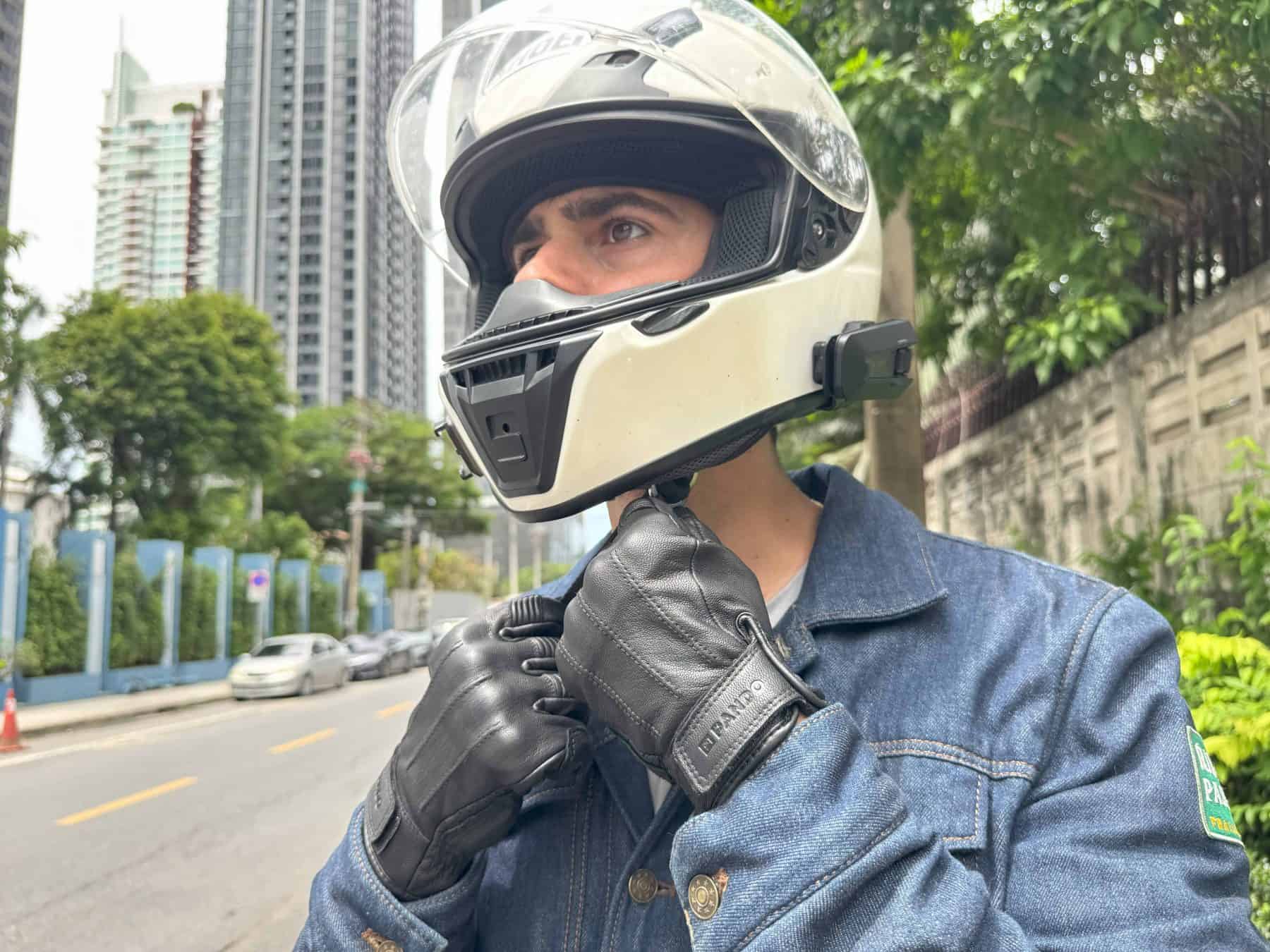
However, the crash‑detection feature is still early tech. It relies on your phone’s cellular service and Cardo’s app to call your chosen contact. Hot Bike’s reviewer found it redundant if you already carry a phone or Apple Watch that can trigger emergency services. That said, if you often ride alone or in remote areas, an extra layer of protection can provide peace of mind.
Who should choose the Packtalk Pro?
Pick the Packtalk Pro if you want the best audio and the reassurance of crash detection. Touring riders who spend multiple days on the road will appreciate the large speakers and three EQ presets. Group leaders can also upgrade to Mesh Boost (a software update) to expand the mesh network to 31 riders and add public mesh and VoIP backup (discussed in detail on our site).
The King of motorcycle intercoms and Bluetooth headsets, the Pro comes with every top of the line feature Cardo offers and their stellar 45mm JBL speakers, the best helmet speakers money can buy.
- 15+ rider intercom over Mesh (even Senas)
- Magnetic air mount
- Auto on-off
- Crash detection and emergency call
- 45mm JBL speakers in the box (the best)
- Costs as much as a mid-range helmet
Downsides and Alternatives
The Pro is expensive (usually about $460), and the crash sensor adds complexity. If you’re on a budget or ride mostly with small groups, the Packtalk Edge gives you the same mesh performance, voice control and waterproofing for less money. If you like the idea of emergency alerts but want something simpler, Apple’s iPhone Crash Detection or a SPOT Gen4 satellite tracker may offer more reliable coverage.
Our Review
Read our full hands-on review of the Cardo Packtalk Pro to see how it performs on tours and whether its upgraded audio, mesh, and crash detection justify the price.
Packtalk Edge — Flagship Performance without Crash Detection
The Packtalk Edge is the model most riders end up buying. It packs almost all of the Pro’s features—mesh for up to 15 riders, magnetic Air Mount, Hey Cardo voice control, over‑the‑air updates, 40 mm JBL speakers and IP67 waterproofing. The only things it lacks are the IMU crash sensor and bigger speakers, so it costs about $60 less.
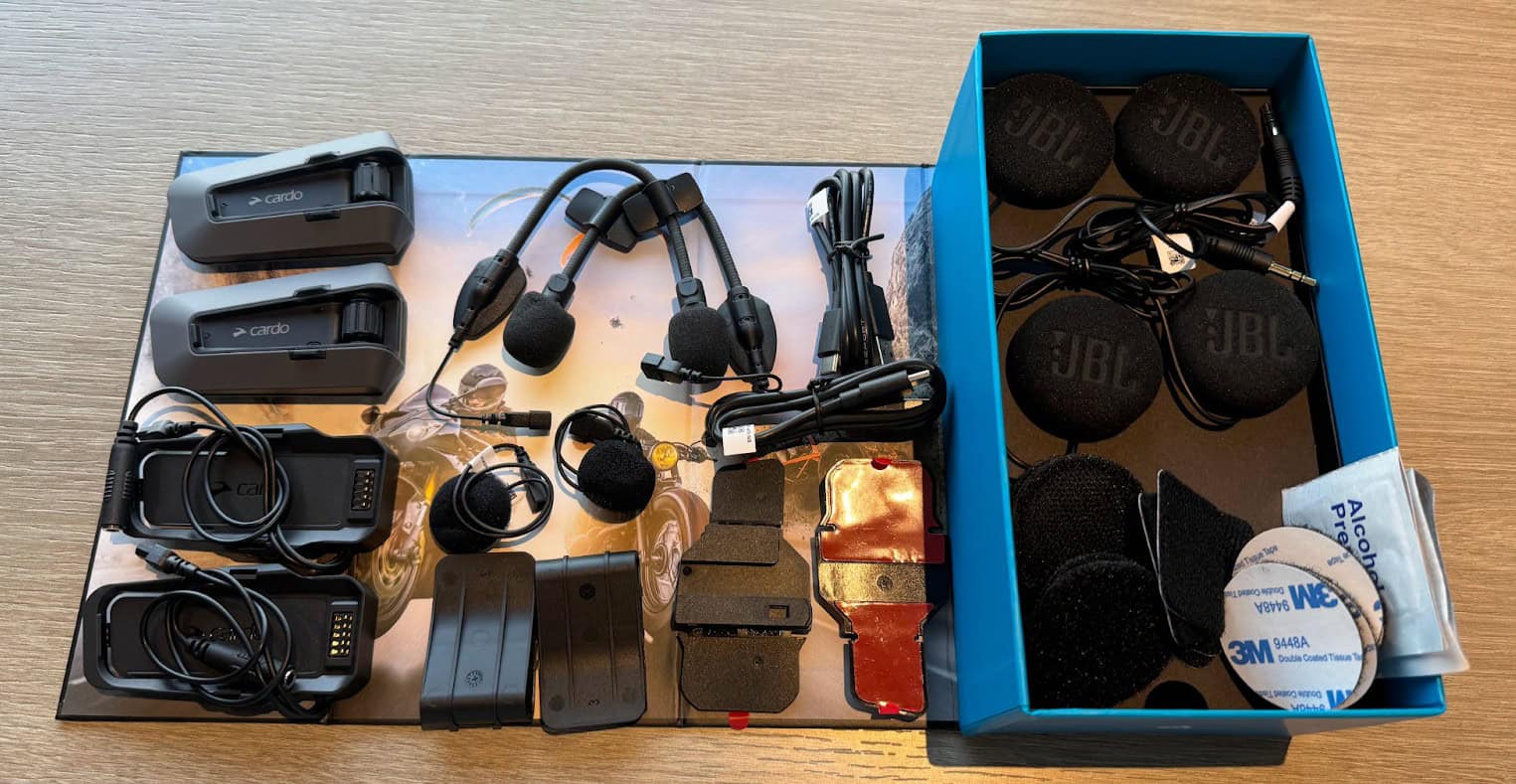
Ride Impressions
Adventure Motorcycle’s review praised the Edge’s magnetic mount and said installation took only minutes. The second‑generation mesh network automatically reconnects riders who fall out of range, so group chats are almost seamless.
The 40 mm speakers provide crisp JBL audio and handle wind noise well, though some riders noticed that strong crosswinds could trigger the system’s automatic volume control and cause the volume to surge or dip. I just say “Hey Cardo, mute microphone,” which prevents the wind from activating the mic.
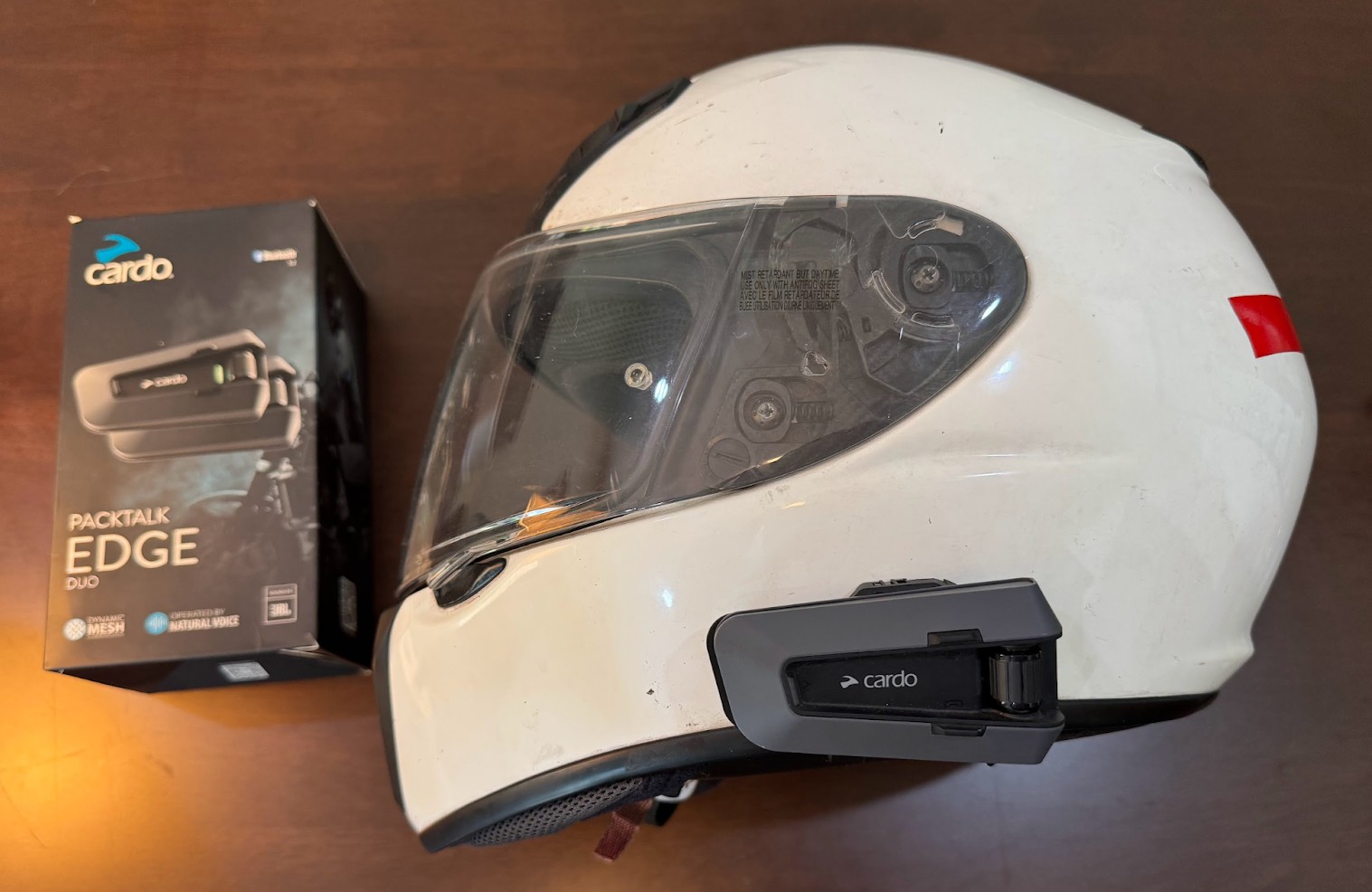
Battery life is around 13 hours and a 20‑minute quick‑charge provides about two hours of talk time. Because the Edge uses the same magnetic mount as the Pro, you can swap units between helmets easily.
Who should choose the Packtalk Edge?
If you ride with a consistent group of riders, often on long trips, the Edge offers the sweet spot between price and performance. It’s also ideal for coaches or tour operators who need to connect to many riders. Riders upgrading from older Packtalk Bold units will notice better audio and easier mounting.
The Gold Standard in motorcycle communication units. Simple to use, rugged and reliable, with premium sound and long battery life.
- 1.6 km (~1 mi) unit‑to‑unit range (works through obstacles, we've tested)
- Up to 8 km (5 mi) group range
- 13 hr battery life
- Magnetic Air‑Mount snaps securely
- Fiddly to remove with gloves
- Not ideal if your crew all use Sena
Downsides and Alternatives
For some riders the lack of 45 mm speakers might be a disappointment, but the Edge’s 40 mm JBL drivers still impress most listeners. If you always ride with two or three friends, the less‑expensive Freecom 4X provides similar audio quality and simpler Bluetooth operation.
Our Review
Read our deep-dive review of the Cardo Packtalk Edge to see how it performs in rides and why it’s earned a spot as the go-to communicator for everyday and touring riders.
Packtalk Neo — Mesh Tech at a Lower Price
The Packtalk Neo is almost a Packtalk Edge without the magnetic mount. It uses a traditional sliding base plate, and as a result it’s about $50 cheaper. It still offers Dynamic Mesh Communication, natural voice operation, 40 mm JBL speakers, IP67 waterproofing, up to 15 riders, 1.6 km range and over‑the‑air updates. The warranty is two years instead of three, and you need to plug it into the mount to charge—there’s no quick‑release for charging like on the Edge or Pro.
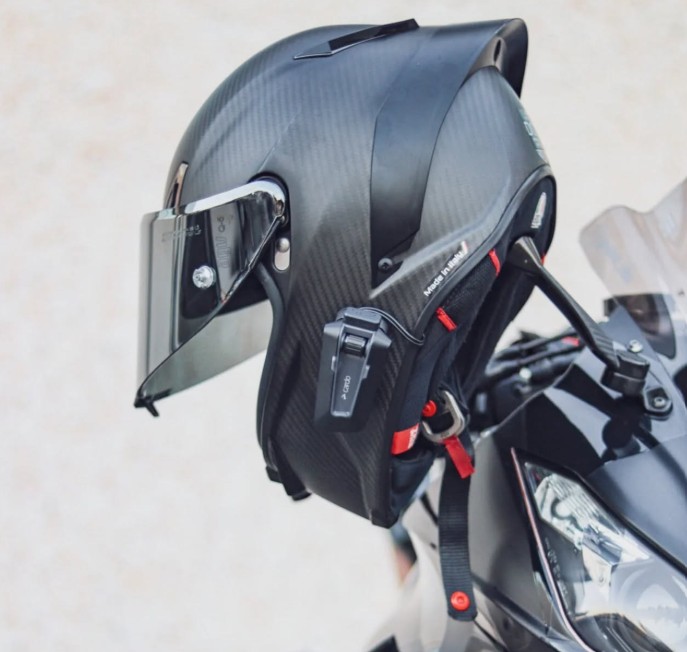
Ride Impressions
The Neo feels almost identical on the road to the Edge. You get the same crisp JBL sound and seamless mesh, but the sliding base means removal and installation take a few extra seconds. Some riders report that the clamping base can be fussy on helmets with thick edges; it’s worth checking your helmet compatibility. Battery life mirrors the Edge at around 13 hours.
Who should choose the Packtalk Neo?
If you’re okay with a standard mount and want to save some cash, the Neo is the most affordable entry into Cardo’s mesh world. It’s perfect for riders who rarely swap units between helmets and don’t mind losing the convenience of the magnetic Air Mount.
Lightweight but powerful, the Packtalk Neo brings Dynamic Mesh 2.0, top-tier JBL sound, and IP67 durability—delivering seamless group chat and superb audio wherever you ride.
- Easy group setup with self‑healing mesh (2.0)
- Rich, clear audio from 40 mm JBL speakers
- Voice‑activated, hands‑free control ("Hey Cardo")
- Waterproof (IP67) design handles any weather
- Small buttons can be tricky to use with gloves
- Clip‑on mount still needs cable connection to charge
Downsides and Alternatives
Because the Neo lacks the magnetic mount, you must remove the entire mount to charge it. If you frequently move your communicator between helmets, the Edge will save you time. As an alternative, budget‑conscious riders who don’t need mesh can look at the Freecom 4X, which delivers excellent audio for smaller groups.
Freecom 4X — Bluetooth All‑rounder for Small Groups
The Freecom 4X sits at the top of Cardo’s Bluetooth lineup. It features 40 mm JBL speakers, natural voice control, Bluetooth 5.2, pairing for up to four riders, a 1.2 km claimed range, music sharing, and over‑the‑air firmware updates. A two‑year warranty and IPX‑rated waterproofing (Cardo doesn’t publish the rating) round out the spec sheet.
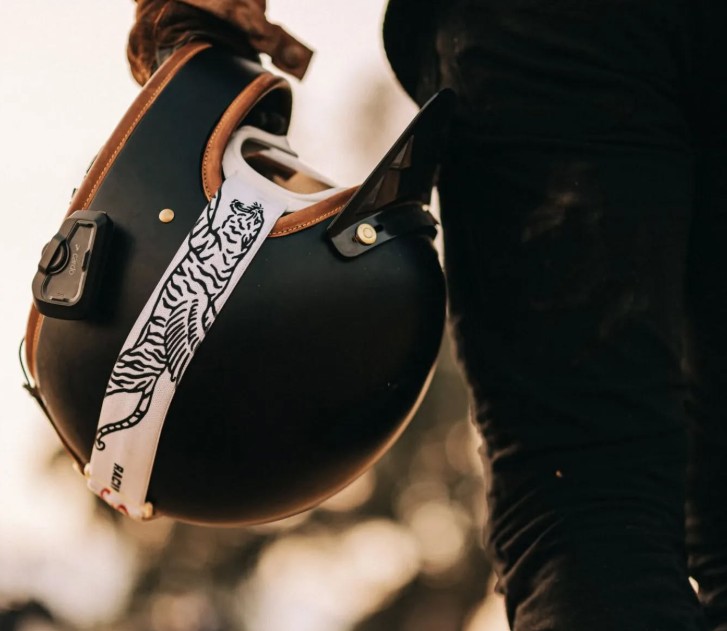
Ride Impressions
Bennetts BikeSocial tested the Freecom 4X over several hundred miles and found that it offers excellent audio quality and is properly waterproof, despite lacking an official IP rating. They measured battery life around 11 hours when streaming music at full volume—slightly less than the 13‑hour claim—and noted that a 20‑minute quick charge adds about two hours of talk time. The reviewer appreciated USB‑C charging and the ability to remove the unit to charge it separately.
Connecting to a phone and pairing with other Freecom units is straightforward and the Cardo Connect app makes firmware updates easy. However, some controls are “fiddly” and occasional minor connection issues were reported when adding multiple riders. Bennetts concluded that the Freecom 4X’s audio quality and waterproofing make it one of the best Bluetooth intercoms they’ve used.
Our correspondent, Sebastian Staelens, uses a Freecom 4X in his gear setup, and his experience with it (audio, waterproofing, Bluetooth stability) helps inform our recommendations for riders who prefer a Bluetooth-only setup.
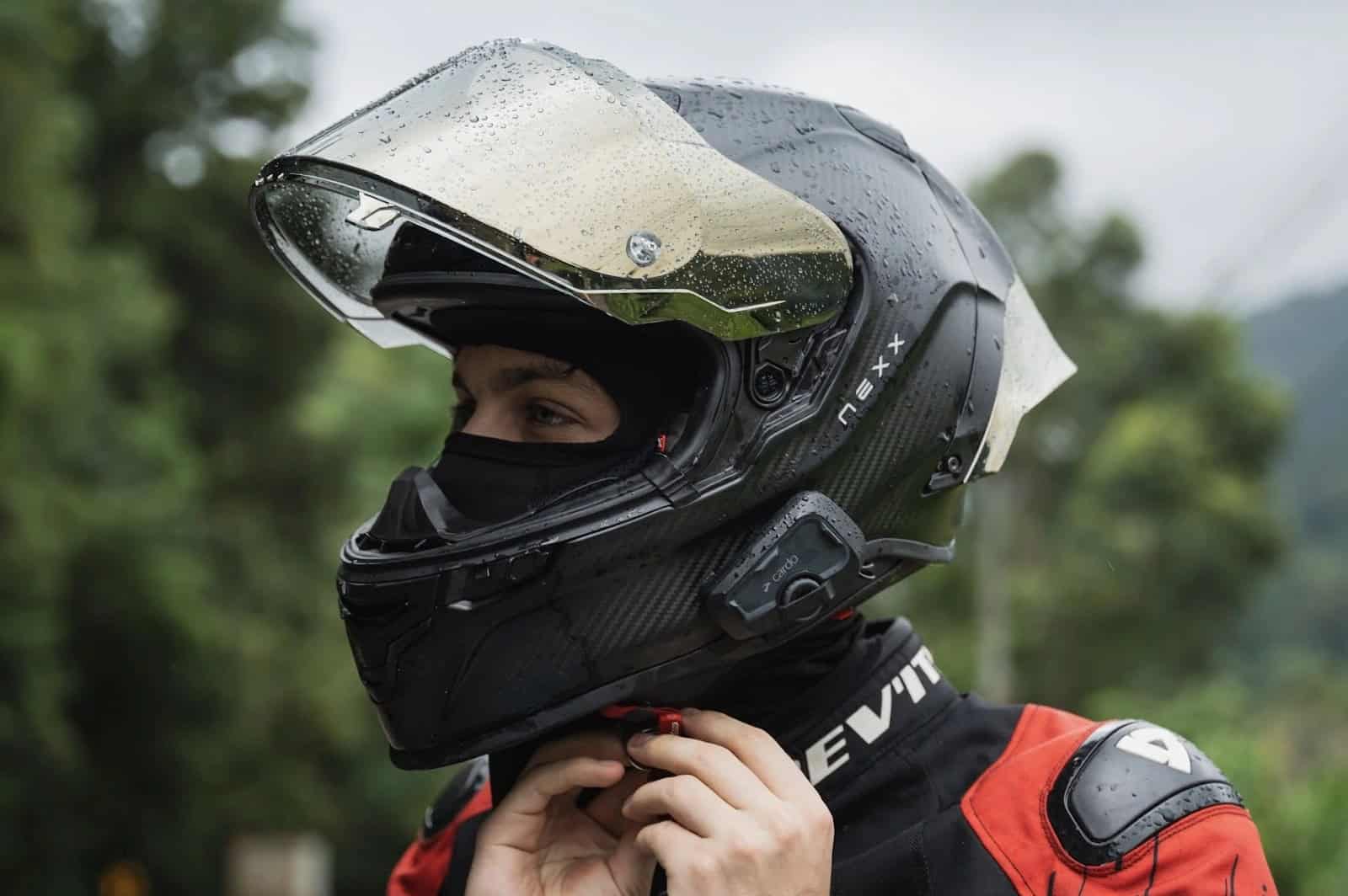
Who should choose the Freecom 4X?
Choose the Freecom 4X if you ride with up to four friends and don’t need mesh. The JBL audio and dynamic volume make music enjoyable even at highway speeds. It’s also ideal for commuting because it connects quickly to your phone for calls and navigation.
The Cardo Freecom 4X is a premium Bluetooth communication system designed for riders seeking high-quality audio and reliable intercom capabilities without the complexity of mesh networks.
- Waterproof
- JBL 40mm speakers
- Voice control & Live Intercom
- No mesh support
- Limited to 4 riders
Downsides and Alternatives
The Freecom 4X cannot reconfigure itself like a mesh system when riders drop out, and pairing multiple units can become complicated. If you ride with more than four people or want effortless reconnections, consider upgrading to the Packtalk Neo. On the budget side, the Freecom 2X offers similar audio quality but limits intercom to two riders.
Our Review
Check out our on-road review of the Cardo Freecom 4X to see how it performs day-to-day and why riders say its JBL audio and voice controls make it a standout Bluetooth unit.
Freecom 2X — Bluetooth Duo with Punchy Sound
The Freecom 2X is essentially a two‑rider version of the 4X. It uses 40 mm JBL speakers, supports Bluetooth 5.2, offers an 800 m intercom range, music sharing, over‑the‑air updates and two‑year warranty. Like the 4X, it uses the same three‑button control layout and natural voice commands.
Ride Impressions
Because there are few dedicated reviews of the 2X, we looked at the predecessor (Freecom 2+) and forum posts to get a feel for user experiences. One user on Wild Dog Adventure Riding complained that his Freecom 2X package arrived unsealed and missing an instruction booklet. He also found the wiring bulky and the volume too low at 100 km/h even without earplugs. That’s obviously a bad experience, but it contrasts with other riders who report excellent sound.
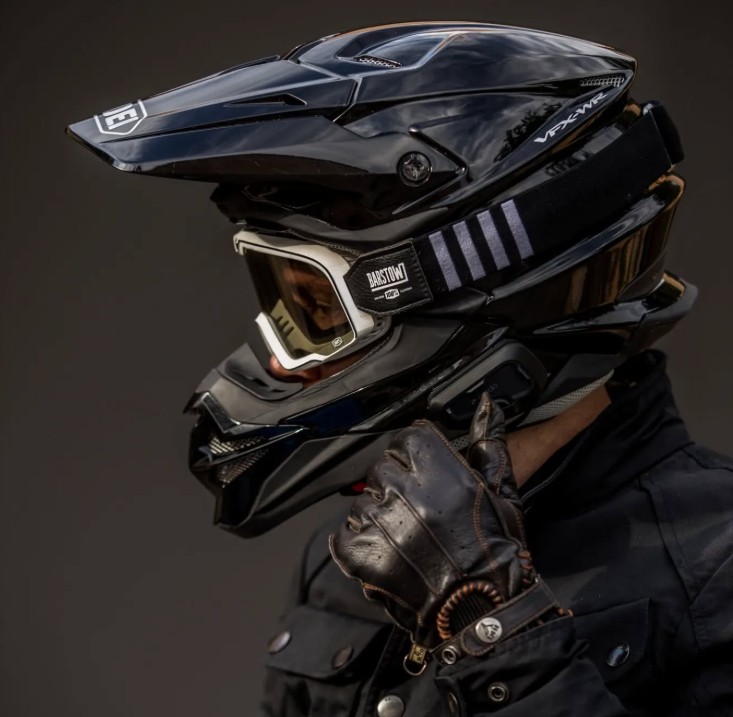
A blogger who reviewed the Freecom 2+ (the predecessor) noted that the design is sleek and aerodynamic, making installation easy and reducing wind noise. They praised the large, ridged buttons which are easy to find with gloves on. Audio quality is clear at lower speeds but wind noise can overwhelm the microphone above 70 mph. The 500 m range (approx. 0.5 km) is sufficient for a single riding partner but can be sketchy at the edge of range. The reviewer loved the dynamic volume feature which automatically raises volume as speed increases and highlighted the excellent Bluetooth connection for music streaming. Battery life easily meets Cardo’s 13‑hour claim, often exceeding it.
Who should choose the Freecom 2X?
If you regularly ride with just one friend or a passenger and don’t need the extra capacity of the 4X, the Freecom 2X makes sense. It’s also perfect for solo riders who want quality JBL sound and reliable phone connection without paying for mesh. Commuters will enjoy its long battery life and dynamic volume that adapts to road noise.
Bluetooth motorcycle headset with JBL audio and rider-to-rider intercom, designed for everyday riding.
- JBL speakers deliver decent clarity
- Wireless software updates
- Waterproof and weather-ready
- Audio too quiet with earplugs or loud pipes
Downsides and Alternatives
Because it only supports two riders, the Freecom 2X isn’t suitable for group trips. If you want to expand your riding circle in the future, the 4X or a Packtalk model will be more flexible. Some users find the speaker plug bulky and the sound volume lacking at high speeds; if you ride a loud bike, consider investing in upgraded JBL speakers (available separately) or step up to the Freecom 4X.
Our Review
Read our honest review of the Cardo Freecom 2X to see how it performs in riding conditions and why some riders find its audio underwhelming for highway use.
Spirit HD — Budget Champ with HD Audio
The Spirit HD sits below the Freecoms but still punches above its weight. It features 40 mm speakers, Bluetooth 5.2, FM radio, music sharing, 600 m claimed range, two‑rider intercom, over‑the‑air updates and USB‑C charging. It’s incredibly affordable and comes with a two‑year warranty.
Ride Impressions
Bennetts BikeSocial loves the Spirit HD’s audio quality, noting that it’s brilliant and has surprising bass. The reviewer said the HD’s sound is only a fraction behind Cardo’s premium JBL‑equipped units and praised the Bass Boost and High Volume modes. They also appreciated that the volume controls directly adjust the phone’s volume, so you don’t need to max out your phone before riding.
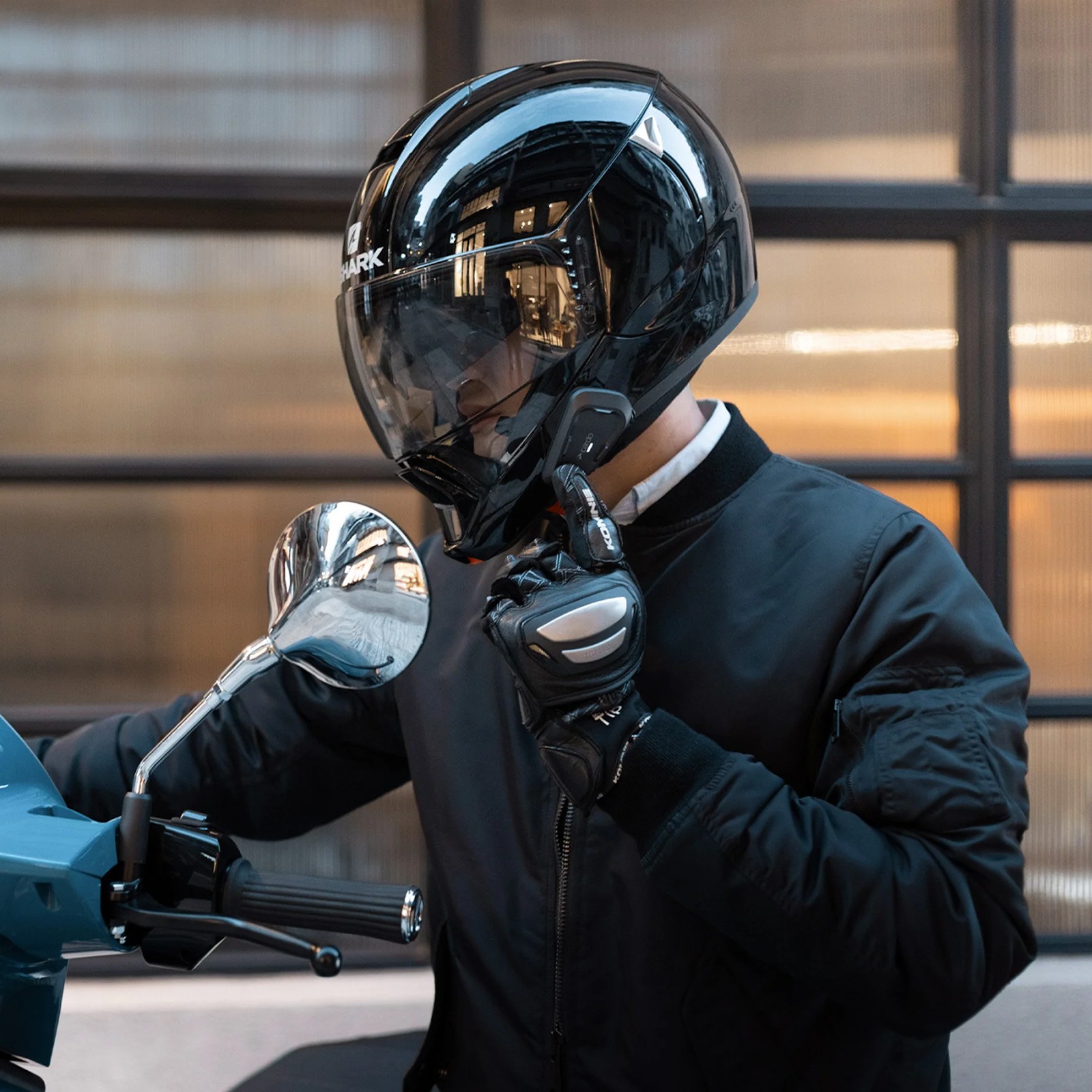
The 600 m range is enough for rider‑to‑pillion or two close riders, and in testing the unit managed almost 800 m before dropping out. It automatically reconnected at about 400 m, demonstrating that range can exceed the specification. Battery life is claimed at 13 hours and Bennetts got a shade over 11 hours of music playback. Charging takes about two hours via USB‑C and a spoken battery announcement on power‑off reminds you when to recharge.
There are a few downsides. Pairing devices can be a chore, and the sat‑nav announcements sometimes come through quietly. The buttons can be fiddly—stopping music requires pressing two buttons together—and there’s no voice control, so everything must be done with physical buttons. For group riding, the limited range and two‑rider limit are obvious constraints.
Who should choose the Spirit HD?
If you are a solo rider or ride with just one other person, the Spirit HD offers sensational value. Commuters and weekend riders will appreciate the HD sound, USB‑C charging and FM radio. It’s also great for passengers thanks to its low price.
The Cardo Spirit HD Bluetooth Communication System is an excellent choice for riders seeking a reliable and feature-rich intercom without breaking the bank.
- Affordable
- Waterproof
- Music, Intercom, GPS work flawlessly
- Max 2 Intercom Participants
- Short range (600m)
Downsides and Alternatives
The Spirit HD lacks mesh and can’t handle more than two riders. The controls are slightly awkward and there’s no voice assistant. If you want voice control or a four‑rider intercom, step up to the Freecom 4X. If budget is your only concern and you don’t mind smaller speakers, the base Spirit is even cheaper.
Our Review
Read our long-term review of the Cardo Spirit HD to see why it’s the best-value pick for solo or two-up rides—and the simple speaker upgrade that unlocks great audio.
Spirit — The Entry Point to Cardo’s World
The base Spirit uses 32 mm speakers, supports Bluetooth 5.2, offers an intercom range of about 400 m, and pairs with one other unit. It features voice commands, automatic volume control, fast charging (20 min for two hours), and an IP67 waterproof rating. It’s the most affordable Cardo and is ideal for riders who need basic phone calls, music and occasional intercom.

Ride Impressions
We couldn’t find a detailed professional review of the Spirit, but the spec sheet hints at what to expect. The 32 mm speakers will provide clear voice calls but less bass than the larger units. Automatic volume control helps adapt to changing speeds and noise, and the voice commands let you start or end calls without touching the unit. The intercom is limited to two riders and the 400 m range means you need to stay fairly close.
Anecdotal reports suggest that the Spirit’s smaller speakers are less satisfying for music than the HD or Freecom models. If you care about audio quality, spend a little more on the Spirit HD. On the plus side, the Spirit is IP67 waterproof and uses Bluetooth 5.2 for improved connectivity.
Who should choose the Spirit?
The Spirit is aimed at riders who want a low‑cost communicator for phone calls, navigation and occasional chats with a passenger. It’s suitable for scooter commuters, new riders or anyone trying Cardo for the first time.
A no-fuss Bluetooth headset tailored for solo riders or rider + passenger setups, delivering strong audio, basic intercom and phone/GPS connectivity in a compact waterproof package.
- Clear sound quality
- Easy setup and controls
- Stable Bluetooth connection
- Waterproof build
- Limited to two riders
- Less bass than premium models
Downsides and Alternatives
Because the Spirit has small speakers and a short range, it’s not ideal for riders who love music or ride with others regularly. If you can stretch your budget, the Spirit HD provides much better audio and a longer range for a small price increase.
Our Review
Our Cardo Spirit vs Sena 5S comparison covers whether the Spirit or Sena’s entry‑level unit is better for city riding.
Cardo Comparison Table
The table below summarizes the key specs of the current Cardo range. Prices fluctuate, so these are rough indications based on 2025 retail.
| Model | Intercom network | Riders supported | Range | Speakers & Audio | Notable features | Approx. price (USD) |
|---|---|---|---|---|---|---|
| Packtalk Pro | Dynamic Mesh 2.0 + Bluetooth | Up to 15 (31 with Mesh Boost update) | ~1.6 km (1 mi) | 45 mm JBL speakers, 3 EQ profiles | Crash detection, auto on/off, Air Mount, IP67, voice control | ~$459 |
| Packtalk Edge | Dynamic Mesh 2.0 + Bluetooth | Up to 15 | ~1.6 km | 40 mm JBL speakers | Air Mount, voice control, IP67, quick‑charge, 3‑yr warranty | ~$399 |
| Packtalk Neo | Dynamic Mesh 2.0 + Bluetooth | Up to 15 | ~1.6 km | 40 mm JBL speakers | Sliding mount, voice control, IP67, 2‑yr warranty | ~$349 |
| Freecom 4X | Bluetooth 5.2 | Up to 4 | ~1.2 km | 40 mm JBL speakers | Natural voice operation, music sharing, OTA updates | ~$269 |
| Freecom 2X | Bluetooth 5.2 | Up to 2 | ~0.8 km | 40 mm JBL speakers | Dynamic volume, music sharing, OTA updates | ~$219 |
| Spirit HD | Bluetooth 5.2 | Up to 2 | ~0.6 km | 40 mm HD speakers | FM radio, Bass Boost, USB‑C quick‑charge | ~$159 |
| Spirit | Bluetooth 5.2 | Up to 2 | ~0.4 km | 32 mm speakers | Voice commands, auto volume, IP67 | ~$109 |
Buying Guide: Choosing the Right Cardo For You
Group size and riding style
The number of riders you regularly ride with is the most important factor. Mesh systems like the Packtalk models let you add and drop riders without complex pairing, making them ideal for tours and club rides. Bluetooth‑only models (Freecom and Spirit) work well for 2–4 riders, but you must stay within range and reconnect manually if someone drops out.

Audio quality
Cardo’s partnership with JBL means even the budget models sound better than most competitors. If you love music, look for 40 mm or larger speakers. The Packtalk Pro’s 45 mm drivers provide the richest sound, while the Spirit’s 32 mm speakers are just adequate for phone calls.
Mounting convenience
The Air Mount on the Pro and Edge is incredibly convenient; you can snap the unit on and off with gloves on. The Neo, Freecom and Spirit models use traditional clip or adhesive mounts, which take longer to remove. If you swap between helmets often, spend the extra money for a magnetic mount.
Battery life and charging
Most Cardo units provide around 13 hours of talk time with USB‑C charging. Quick‑charge features (20 min for ~2 hours) are available on the Packtalk and Freecom lines. Consider your daily ride length and whether you can charge during lunch breaks.
Voice control vs physical buttons
Packtalk and Freecom 4X offer natural voice commands that let you adjust volume or start an intercom without taking your hands off the bars. The Spirit line doesn’t have full voice control, and you need to press combinations of small buttons. If you ride in cold climates or wear thick gloves, voice control is a real benefit.
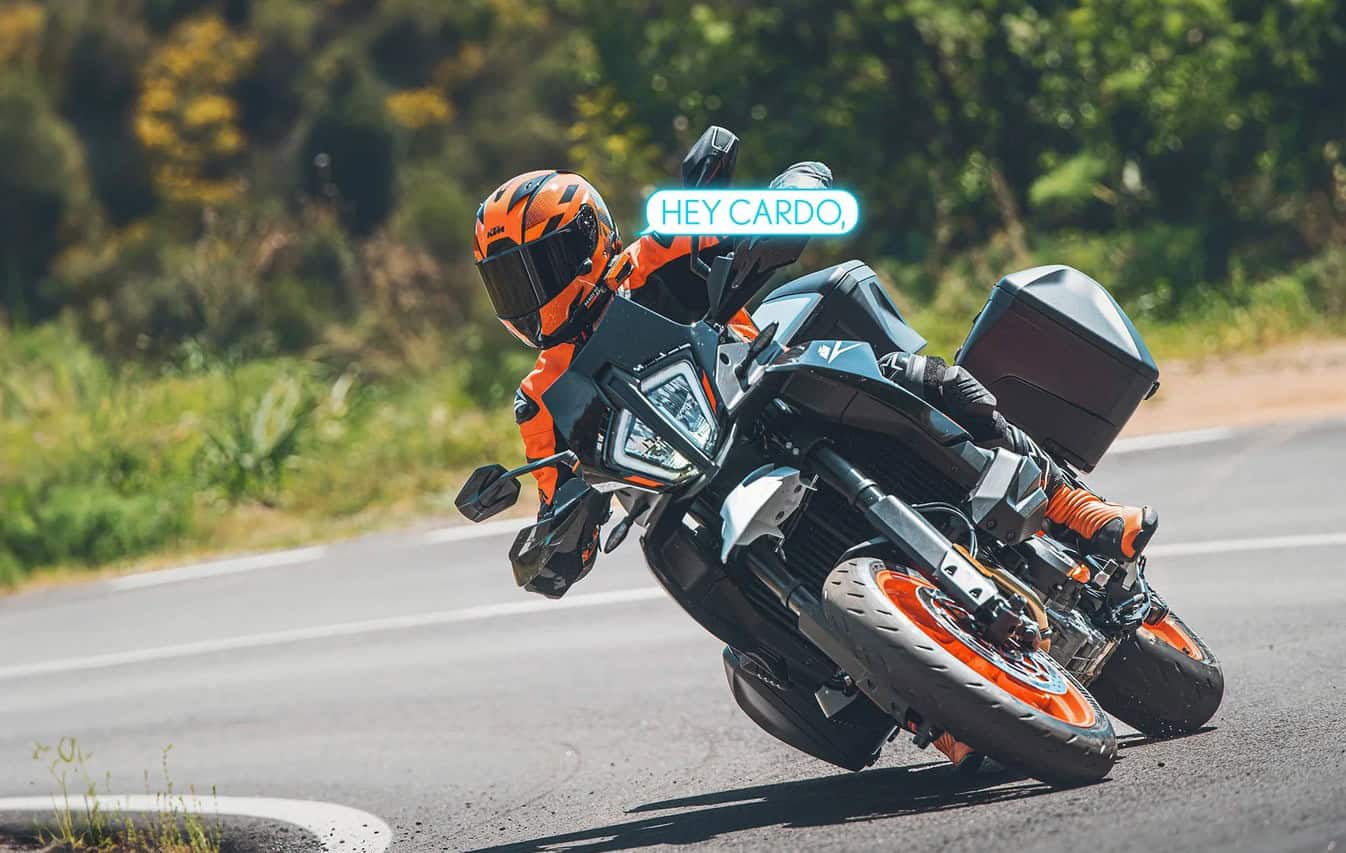
Budget
Spending more generally buys you mesh networking, better speakers and convenience. However, the Spirit HD proves that you don’t need to spend a fortune to get great sound. For new riders or commuters, the Spirit or Spirit HD might be all you need.
Future‑proofing and resale value
Higher‑end Cardos have longer warranties (three years on the Packtalk models) and historically hold their value better when you upgrade. Mesh updates like Mesh Boost can add features after purchase. Cheaper units might be all you need now, but consider whether your riding group might grow or whether you’ll start touring.
Final Thoughts
Cardo’s 2025 lineup offers something for every rider, from the tech‑savvy tourer who wants crash detection and concert‑quality sound to the commuter who simply wants to hear directions and call home hands‑free.
You don’t need the most expensive model to enjoy great audio and reliable comms, but investing in the right unit will make every ride safer and more enjoyable. Think about how you ride, who you ride with and how much simplicity or tech you’re comfortable with, then pick the Cardo that matches your world.
Happy riding!
Related
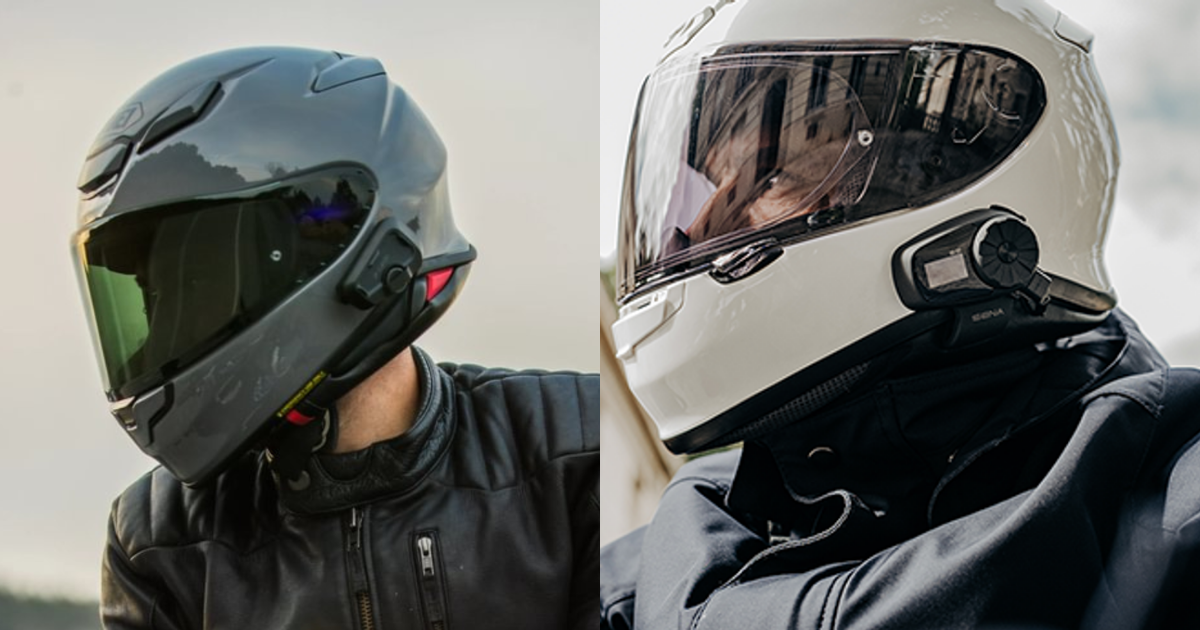
Cardo Freecom 2X vs Sena 5S: Best for City Riders
We compare Cardo Freecom 2X vs Sena 5S for city riding. See differences in audio quality, weather resistance and whether the extra cost is worth it.

